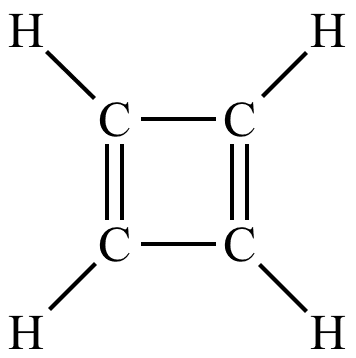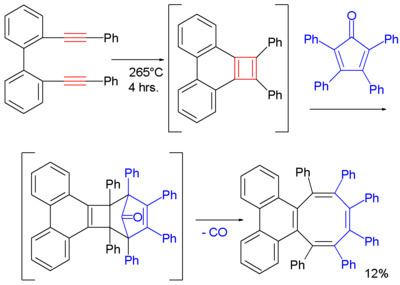Formula C4H4 | Molar mass 52.07 g/mol | |
 | ||
Cyclobutadiene is the smallest [n]-annulene ([4]-annulene), an extremely unstable hydrocarbon having a lifetime shorter than five seconds in the free state. It has chemical formula C4H4. It is believed to be in equilibrium between a pair of rectangular/nonplanar ground states and a square, excited triplet state based upon theoretical calculations, and through spectroscopic and crystallographic investigation of substituted cyclobutadienes, in an argon matrix and inside carceplexes. Though it has alternating single and double bonds, it is predicted triplet, unstable and antiaromatic by Hückel's rule, because its ring has 4 π-electrons, and 4 is not twice an odd number. Some cyclobutadiene–metal compounds are stable, thought to be caused by the metal atom providing 2 more electrons to the system. Planar, rectangular distortion to a singlet ground state is caused by the Jahn–Teller effect. Tetra-t-butyl substituted cyclobutadiene is sufficiently stable to allow for its X-ray crystal structure to be determined, which reveals a distorted, nonplanar geometry and C-C double bond lengths longer than normal (1.464 vs expected 1.34 A)
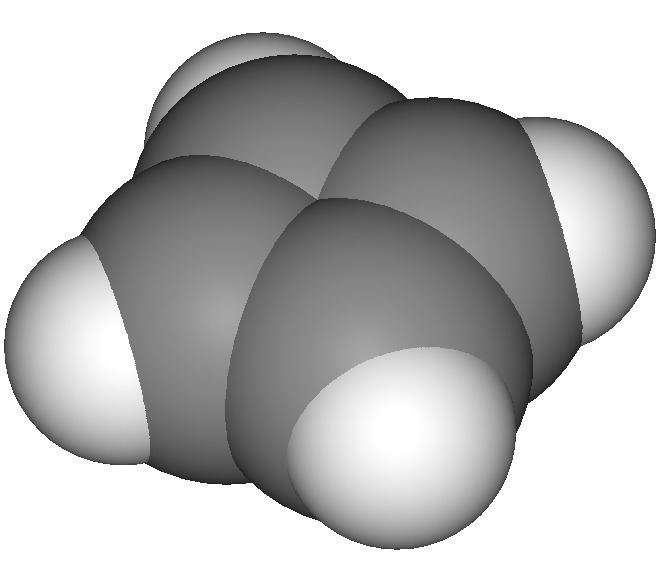
The pi electron energy of cyclobutadiene is higher than that of its open-chain counterpart, 1,3-butadiene, and it is therefore said to be anti-aromatic rather than aromatic. The electronic states of cyclobutadiene have been explored with a variety of computational methods. The singlet ground state has a rectangular structure. The first excited state is a triplet with a square geometry. The rectangular structure is consistent with the existence of two different 1,2-dideutero-1,3-cyclobutadiene stereoisomers. This indicates that the pi electrons are localized and therefore not considered to be aromatic. Cyclobutadiene is far from stable, it is highly reactive and has a very short lifetime. Cyclobutadiene dimerizes at temperatures above 35 K by a Diels-Alder reaction. The monomeric form has been studied at higher temperatures by trapping with matrix isolation in a noble gas.
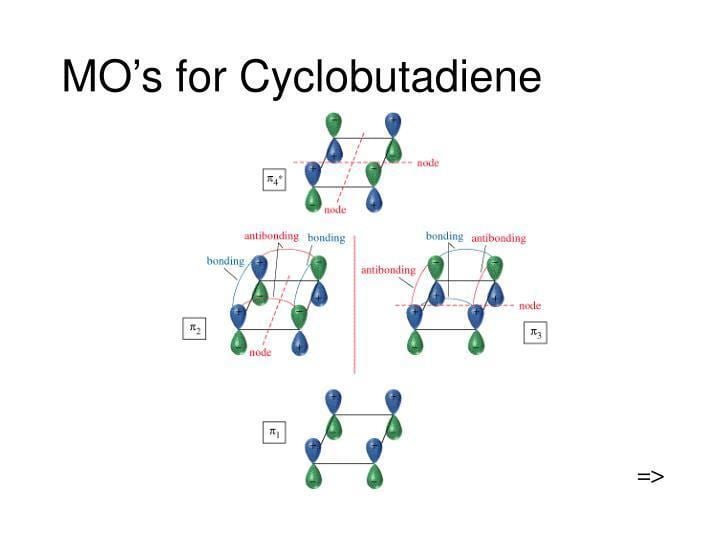
Synthesis

After numerous attempts, cyclobutadiene was first synthesized in 1965 by a team led by Rowland Pettit of the University of Texas, although they could not isolate it. Cyclobutadiene can be generated through degradation from a cyclobutadiene metal compound, for example cyclobutadieneiron tricarbonyl with ammonium cerium(IV) nitrate. This cyclobutadieneiron tricarbonyl complex was prepared from Fe2(CO)9 and cis-dichlorocyclobutene in a double dehydrohalogenation.
Cyclobutadiene, when liberated from the iron complex, reacts with electron-deficient alkynes to form a Dewar benzene:
The Dewar benzene converts to dimethyl phthalate on heating at 90°C.
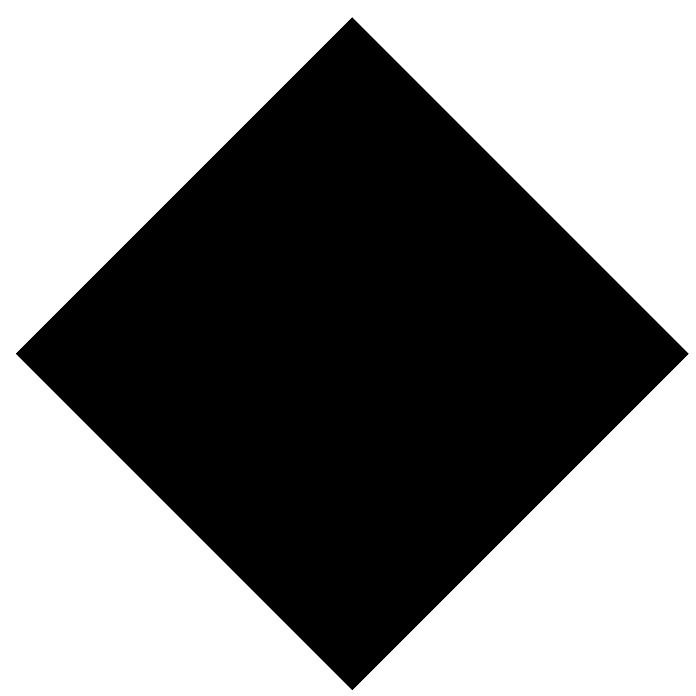
One cyclobutadiene derivative is also accessible through a [2+2]cycloaddition of a di-alkyne. In this particular reaction the trapping reagent is 2,3,4,5-tetraphenylcyclopenta-2,4-dienone and one of the final products (after expulsion of carbon monoxide) is a cyclooctatetraene:
